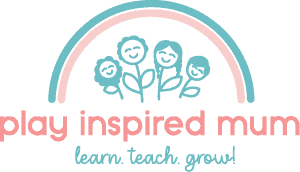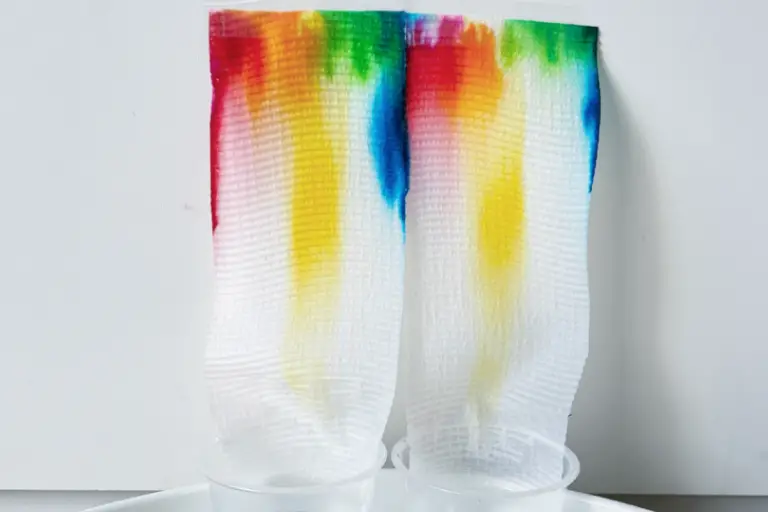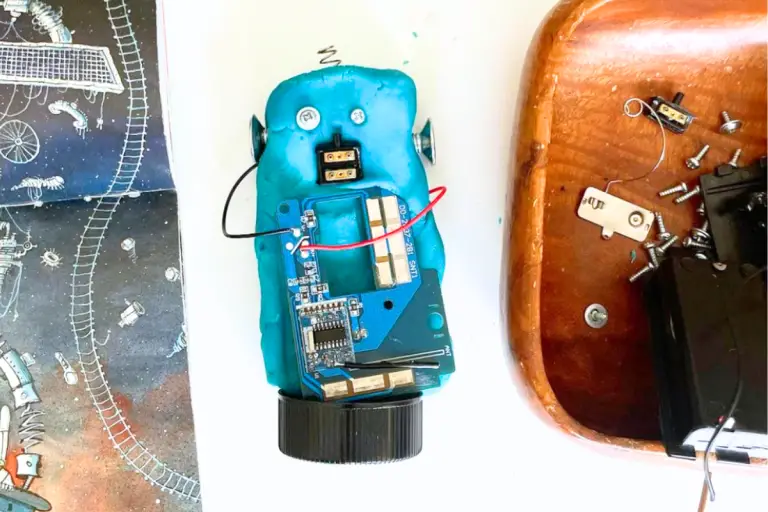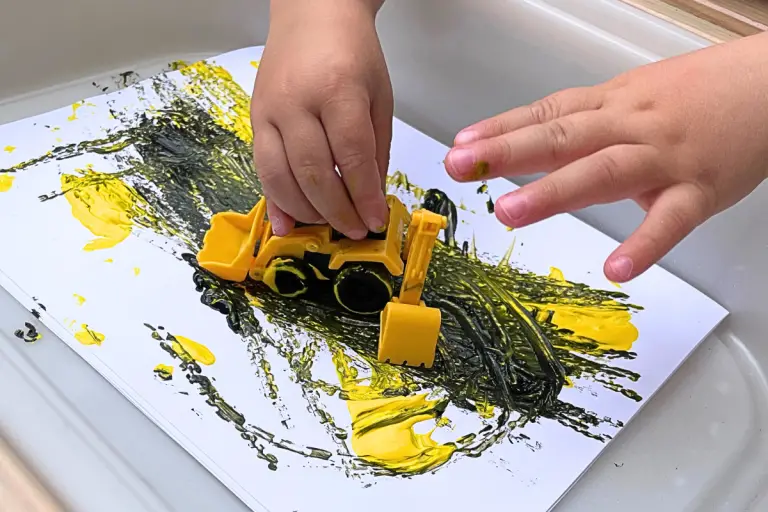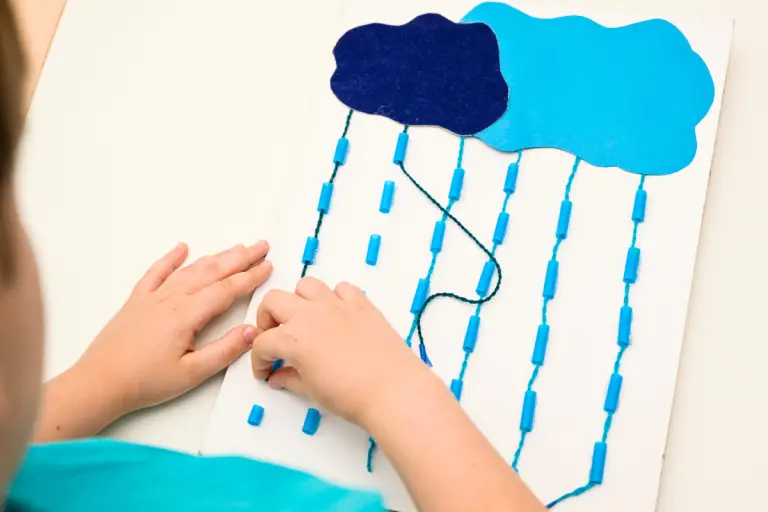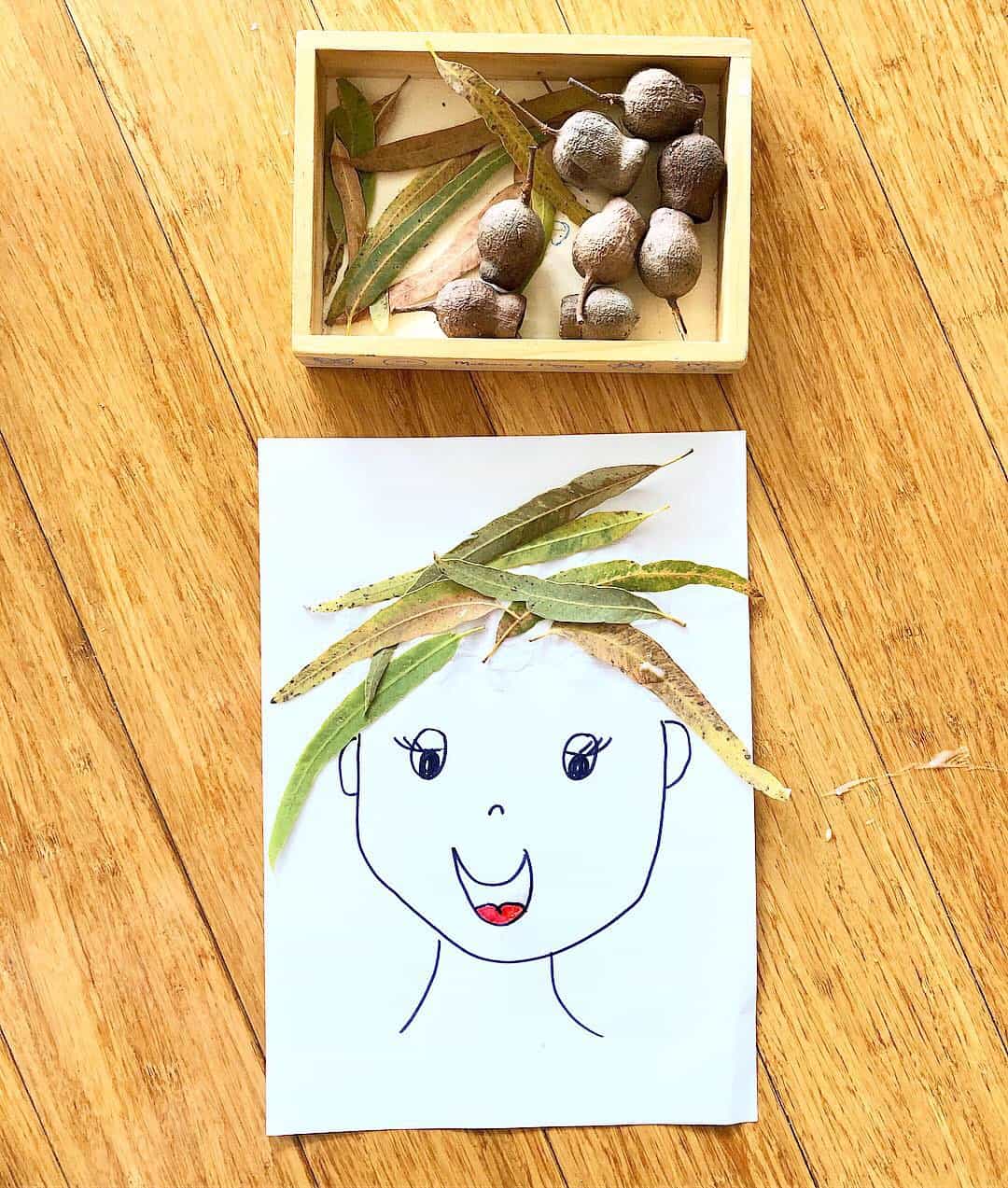Mortar and Pestle Flower Play
Disclosure: This blog contains affiliate links which I may earn a small commission from if you purchase through them, at no extra cost to you.
Enjoy the sensory experience of smashing, grinding and pounding with mortar and pestle flower play.
Making potions in the back yard holds many fond memories of my childhood. I remember grinding flowers between two rocks with sandy toes, leaves in my hair and being completely lost in a world created in my imagination.
Well in attempt to bring some of these experience into my children’s childhood, we took a household object outside. Our humble mortar and pestle turned some pretty flowers into a magical potion paste.
Here is how it went down.
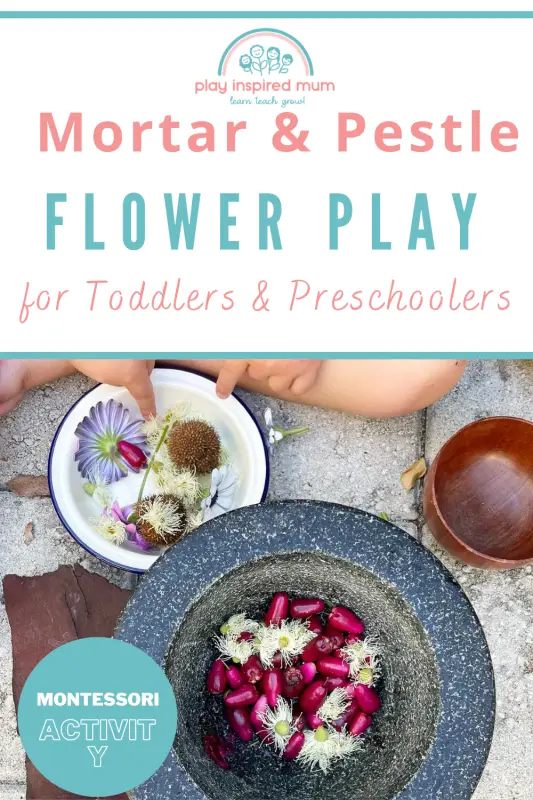
Mortar and Pestle Flower Play
The incredible aromas released by the grinding motion when using a mortar and pestle have always been enjoyable for me.
Our flower play using the mortar and pestle was no different.
While we were playing at a park, we stumbled upon a native eucalyptus tree in flower, and the ground was covered in beautiful white flowers.
The fine petals and sticky stamens were so inviting that we collected some to bring home for our play.
The children have frequently shown interest in our granite mortar and pestle, so we took it outside to play with it.
After gathering some other natural loose parts, we began experimenting, and Mr. 2 took charge in his mud kitchen, cooking up a storm.
Here is how this nature inspired sensory experience came together.

What you need for mortar and pestle flower play
- Mortar and Pestle
- Nature items
- Bowls, spoons, pots
- Water
The mortar and pestle and nature items are the ticket winners in this sensory play activity.
Bowls, spoons, pots and water all add to the experience in their own way.
Our mud kitchen has been stocked with stainless steel pots, pans, utensils and colanders from our local op shop. They get played with every day. Mr two got them with his mud kitchen for his last birthday and he (and his sisters) loves getting outside for some mud cooking.
Nature items that we added to this activity included:
- Eucalyptus flowers
- Daisy flowers
- Lily silly berries
- Sycamore seed pods (I think that’s what they are anyway)
- Bark
- Sticks
The bark and sticks were used as scoops, platter, whisk and spoons.
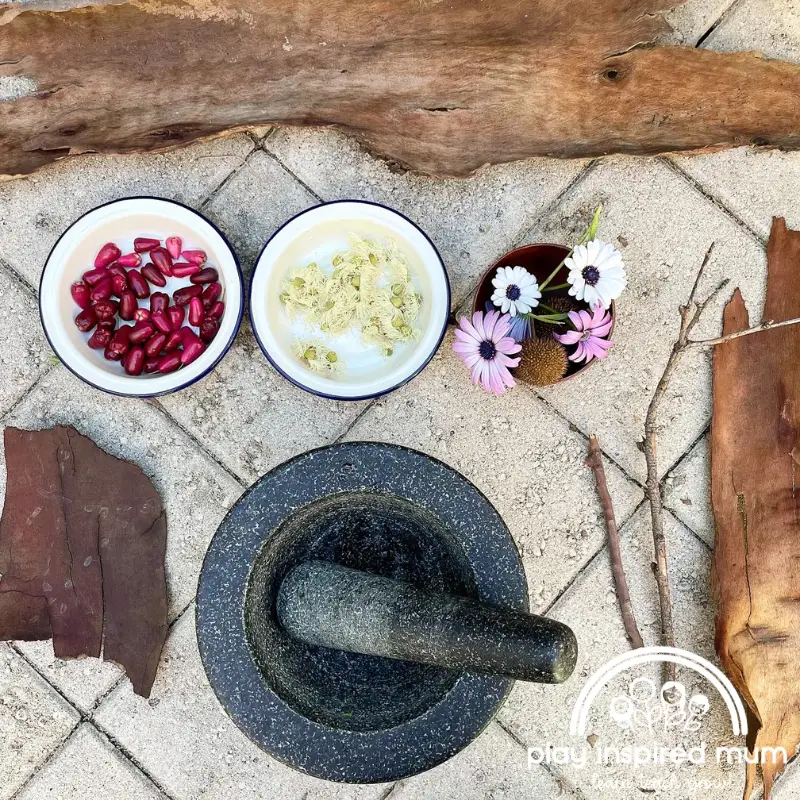
What is a mortar and pestle?
People use a mortar and pestle as a simple kitchen tool to grind and crush ingredients.
It consists of two pieces.
The first is a bowl-shaped container called the mortar. The second is a cylindrical or club-shaped tool called the pestle.
Traditionally, one uses the pestle to grind and crush spices, herbs, nuts, and other ingredients in the mortar by applying pressure and circular motion.
The rough surface of the mortar and pestle helps to break down the ingredients into smaller particles, releasing their flavors and aromas.
Many cultures have used mortar and pestles for centuries, and they are still commonly used today in cooking, pharmacy, and laboratory settings.
Today, we used the mortar and pestle to experiment, develop motor skills and have a whole lot of fun doing so.
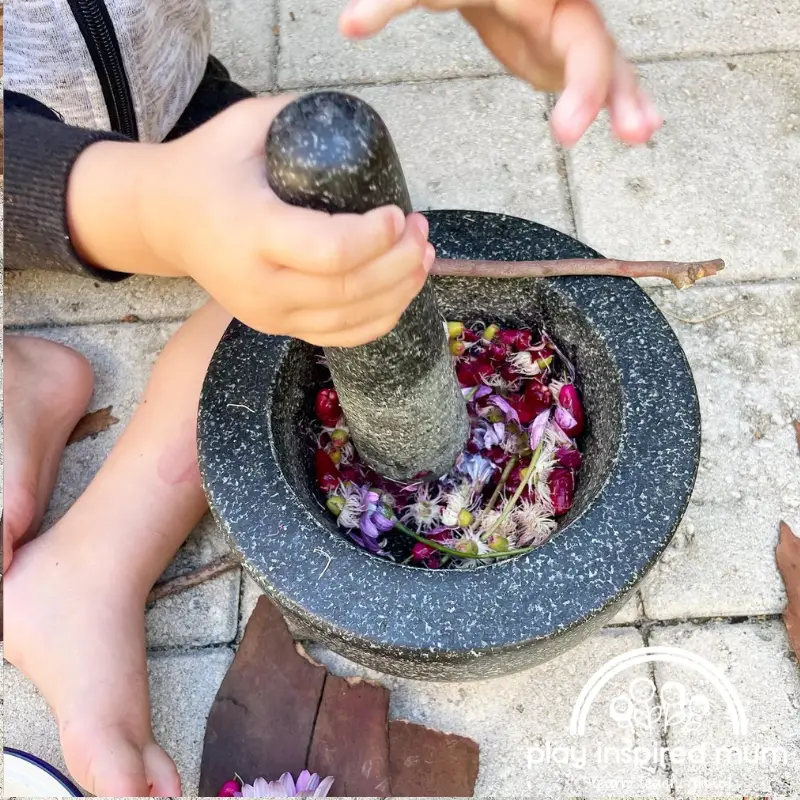
How to set up mortar and pestle flower play
The mortar and pestle are heavy. To avoid them falling on small feet, we kept the play at ground level. There is no harm of it falling on anyone’s toes while its on the ground.
This objective of this activity was to inspire imaginative and creativity.
That being said, I simply layout the resources and let Mr 2’s imagination take the lead.
I modelled how to use the mortar and pestle and the rest of the play evolved from there.
He loved every minute.
The sound of the berries surrendering to the weight of the pestle was an instant reward for every pound. Each pop, sprayed a shower of juice.
As the colour ran onto the flower flowers, everything took on a similar colour.
The fragrance that lifted from the mortar was dominated by the eucalyptus flowers.
It was such a multi sensory experience.
Busy hands and a busy mind were actively engaged in meaningful play throughout the entire time.
The focus was on the mortar and pestle at the beginning.
However, after a few minutes, the weight of the pestle took its toll, and it was put aside in favour of a stick for stirring and whisking.
The pestle did make a comeback but was still too heavy.
To turn it into an oven, an empty bowl was placed on top of the mortar, but it was also made clear that it was hot and not to be touched.
Two days have since passed since this activity was initially set up. Two days later and it still dominated our afternoon. The kids love it!
Sand, leaves and pebbles have also been incorporated and each time, the play evolves.
Open ended, loose parts play for the win!

Experiments during play
Seeds of suggestion can really deepen the understanding of concepts learnt in play.
Children are naturally curious creatures. Bringing things to their attention or adding a question here and there can further expand their comprehension on the experience at hand.
Here are some suggestions that may further develop your child’s comprehension during this play activity:
- What would happen if you moved the pestle in a circular motion
- Whats changed
- How would this be useful in the kitchen
- What would happen if you pounded the seeds instead of grinder them
- What does the smell remind you of
- Who else do you think may enjoy this activity
- Where else may this tool be useful
- What else could we use this tool for
- How do you think a mortar and pestle was invented
- What do you think would happen if these two ingredients were mixed
- What is happening
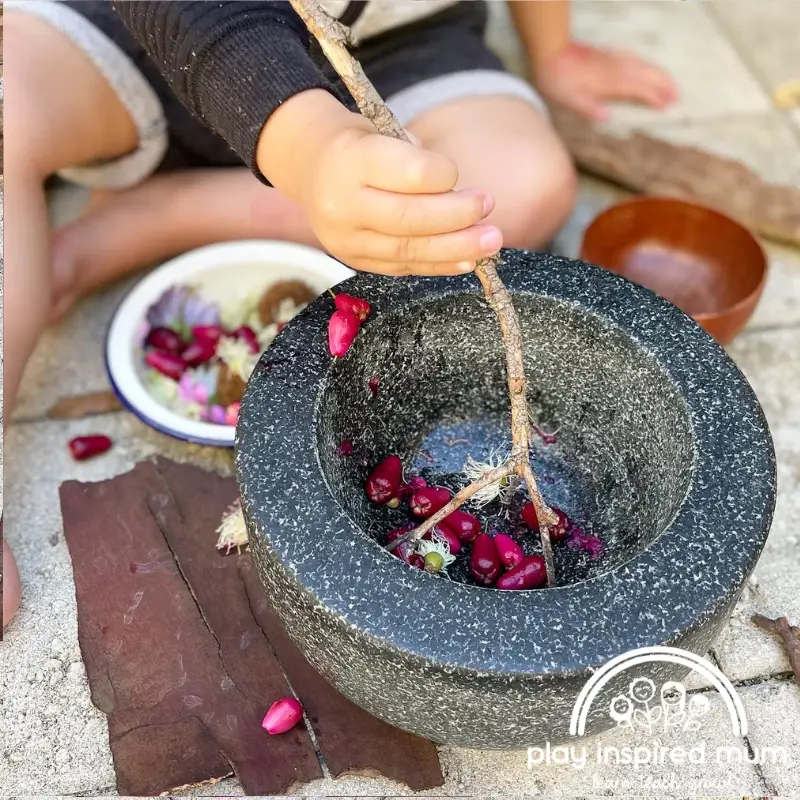
What are some benefits of sensory play?
Sensory play refers to any activity that stimulates the senses of touch, sight, smell, taste, and hearing.
Engaging in Sensory play has numerous benefits for children’s development, including:
- Cognitive Development: Sensory play stimulates the brain and promotes cognitive development, including problem-solving, critical thinking, and decision-making skills.
- Language Development: Sensory play provides opportunities for children to learn new vocabulary and develop language skills as they describe what they see, hear, feel, and smell.
- Fine and Gross Motor Skills: Sensory play involves different types of movements. Examples include pouring, scooping, and stirring, which help children develop fine and gross motor skills.
- Emotional Development: Sensory play can be calming and soothing, helping children manage stress and anxiety. It can also be fun and enjoyable, promoting positive emotional experiences.
- Social Development: Sensory play can be a social activity. It encourages children to share, cooperate, and communicate with others.
- Creativity: Sensory play stimulates creativity and imagination. It encourages children to explore and experiment with different materials and textures.
Sensory play provides a holistic learning experience that supports children’s physical, cognitive, social, and emotional development.

Is mortar and pestle play Montessori?
Yes, most definitely!
In short, Montessori activities allow children to develop practical life skills while enjoying themselves, having fun. Further too playing with flowers, this activity can extend back into the kitchen.
Other ingredients that your child can use with a mortar and pestle include:
- fresh herbs for salad dressings
- dried herbs for sauces
- spices for broths
- garlic for garlic butter
- nuts for cakes and cookies
- egg shells for ridding snails from garden beds
- biscuits to sprinkle on ice cream
- toast to add crunch on top a pasta bake
- chalk to mix with water and paint
- making curry paste and pesto
- rice to make rice flour
